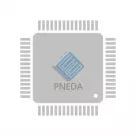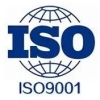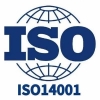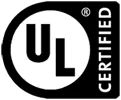Low-power MCUS enable smart home and industrial automation

Did you know that in today's era of rapid technological development, smart homes and industrial automation have greatly improved our quality of life and productivity? This is where low-power microcontrol units (MCUS) come in, bringing tremendous changes and opportunities to the field.
Low power consumption
It can extend the battery life of the device when it runs for a long time. If you think about home automation products like smart door locks, smart sensors, and wearables, it would be much easier if you didn't have to constantly change the battery, and the device would always work properly. In addition, the low-power MCU is flexible and can support a variety of communication protocols, such as Wi-Fi, Bluetooth, and Zigbee. In this way, the device can be easily integrated into the existing smart home ecosystem, giving users a more convenient and seamless experience. It also has strong processing power to support complex applications and algorithms like artificial intelligence (AI) and machine learning to make devices smarter.
Finally, let's talk about this cost-effectiveness, with the continuous progress of technology, the production cost of low-energy MCU slowly decreased, so that more enterprises can use more reasonable investment to engage in intelligent solutions, so that smart home and industrial automation can be more widely popularized.
The role of low-power MCU in smart homes?
This is one area where it is particularly widely used. Put this low-power MCU into the home device, and it can bring us a whole new way of life. Smart lighting control, temperature monitoring, and security systems are typical applications. For example, smart lighting system, with low-energy MCU, you can achieve intelligent dimming, timing switch these functions, we can use the mobile phone APP remote control, but also combined with the sensor automatic brightness. This system not only saves energy, but also makes our living more comfortable.
Another example is intelligent temperature control equipment, which is also supported by low-energy MCU. It can monitor the indoor temperature in real time and automatically adjust it, so that we can better control the environment at home and improve the quality of life. And these devices are becoming smarter and more automated, which is also a great help in the efficient use of energy, so that the energy bills of the home are much less.
There are intelligent security systems, in this era of rapid technological development, it is necessary to rely on low-energy MCU integrated cameras and sensors to monitor whether there is no intrusion. This allows the device to stay online for a long time, keep an eye on the security situation at home, and quickly alert our users if anything is wrong, and the security of the home will be improved a lot.
What about in industrial automation? Similar to smart homes, low-power MCUS are also widely used here. As the manufacturing and service industries become more and more intelligent, the demand for automation equipment is more and more, and this low-energy MCU is an important core to achieve this goal. In the industrial field, low-power MCUS are used in various types of sensors and actuators. These devices can collect environmental data such as temperature, humidity and pressure in real time, and then transmit the data to a central control system. By analyzing and processing these data, manufacturers can monitor the production status in real time, adjust the production process in time, and improve the production efficiency.
On production lines, for example, low-power McU-powered robots can handle and sort materials with extraordinary precision. Because these robots have to work long hours, this low-power feature is particularly important. This can greatly reduce the energy costs of enterprises and make production more sustainable. The role of low-power MCUS in the Industrial Internet of Things (IIoT) can not be underestimated. It can be combined with the cloud platform to transmit device data to the cloud for remote monitoring and management. This allows companies to manage equipment without local constraints, improve operational efficiency, and reduce failure rates.
So how will this low-power MCU develop in the future? It doesn't just stop. As smart home and industrial automation continue to evolve, the capabilities and performance of the MCU will continue to upgrade. In the future, we can imagine that this low-power MCU will integrate more advanced technologies, such as edge computing, augmented reality, and so on, to make it more intelligent. At the same time, with the popularization of 5G technology, the connectivity of low-power MCUS will also be greatly improved. Communication speeds are faster, latency is lower, and the response between devices is more sensitive, which can bring more innovative application possibilities for smart home and industrial automation.
In the current environmental concept is more and more popular in the case, low-energy MCUS will take smart home and industrial automation towards higher energy efficiency and lower emissions. This will not only improve the quality of life of our users, but also contribute to sustainable development. With the continuous development of science and technology, the application scenarios of low-energy MCUS will continue to expand, promoting the intelligent era to come quickly. Whether in our home life, or in industrial production, low-energy MCU will always play its indispensable role, helping to improve the ecological environment, so that the economy can be sustainable development.
您可能感興趣的產品
 |
CP2500AC54TEZ-B | AC/DC CONVERTER | 8154 More on Order |
 |
CAR2512TEBXXZ01A | AC/DC CONVERTER 12V 2500W | 5597 More on Order |
 |
EHHD036A0F41-SZ | DC DC CONVERTER 3.3V 120W | 4590 More on Order |
 |
AXH010A0F93-SRZ | DC DC CONVERTER 3.3V 33W | 3798 More on Order |
 |
AXH010A0F93-SR | DC DC CONVERTER 3.3V 33W | 8982 More on Order |
 |
AXH010A0F5 | DC DC CONVERTER 3.3V 33W | 6282 More on Order |
 |
AXH010A0D9-SRZ | DC DC CONVERTER 2V 20W | 8334 More on Order |
 |
AXH010A0D | DC DC CONVERTER 2V 20W | 6030 More on Order |
 |
QRW025A0G641 | DC DC CONVERTER 2.5V 63W | 8802 More on Order |
 |
KW025A0P41Z | DC DC CONVERTER 1.2V 30W | 5634 More on Order |
 |
APTS020A0X3-SRDZ | DC DC CONVERTER 0.6-5.5V 110W | 3294 More on Order |
 |
QW030A | DC DC CONVERTER 5V 30W | 33 More on Order |
 |
QW020A0G | DC DC CONVERTER 2.5V 50W | 5382 More on Order |
 |
QRW040A0M1 | DC DC CONVERTER 1.5V 60W | 8046 More on Order |
 |
QRW010A0B71-H | DC DC CONVERTER 12V 120W | 3744 More on Order |
 |
LW015A91 | DC DC CONVERTER 5V 15W | 4824 More on Order |
 |
LW010F81 | DC DC CONVERTER 3.3V 10W | 6840 More on Order |
 |
EQW023A0G1-S | DC DC CONVERTER 2.5V 58W | 5976 More on Order |
 |
ATH006A0X-SR | DC DC CONVERTER 0.8-3.6V 21W | 3490 More on Order |
 |
KHHD010A0A41-SRZ | DC DC CONVERTER 5V 50W | 3690 More on Order |
 |
PVX003A0X43-SRZ | DC DC CONVERTER 0.6-5.5V 17W | 2790 More on Order |
 |
APXS003A0X4-SRZ | DC DC CONVERTER 0.6-5.5V 15W | 2772 More on Order |
 |
ATA016A0X43-SRZ | DC DC CONVERTER 0.8-5.5V 88W | 7416 More on Order |
 |
APTS012A0X3-SRZ | DC DC CONVERTER 0.7-5.5V 66W | 451 More on Order |









